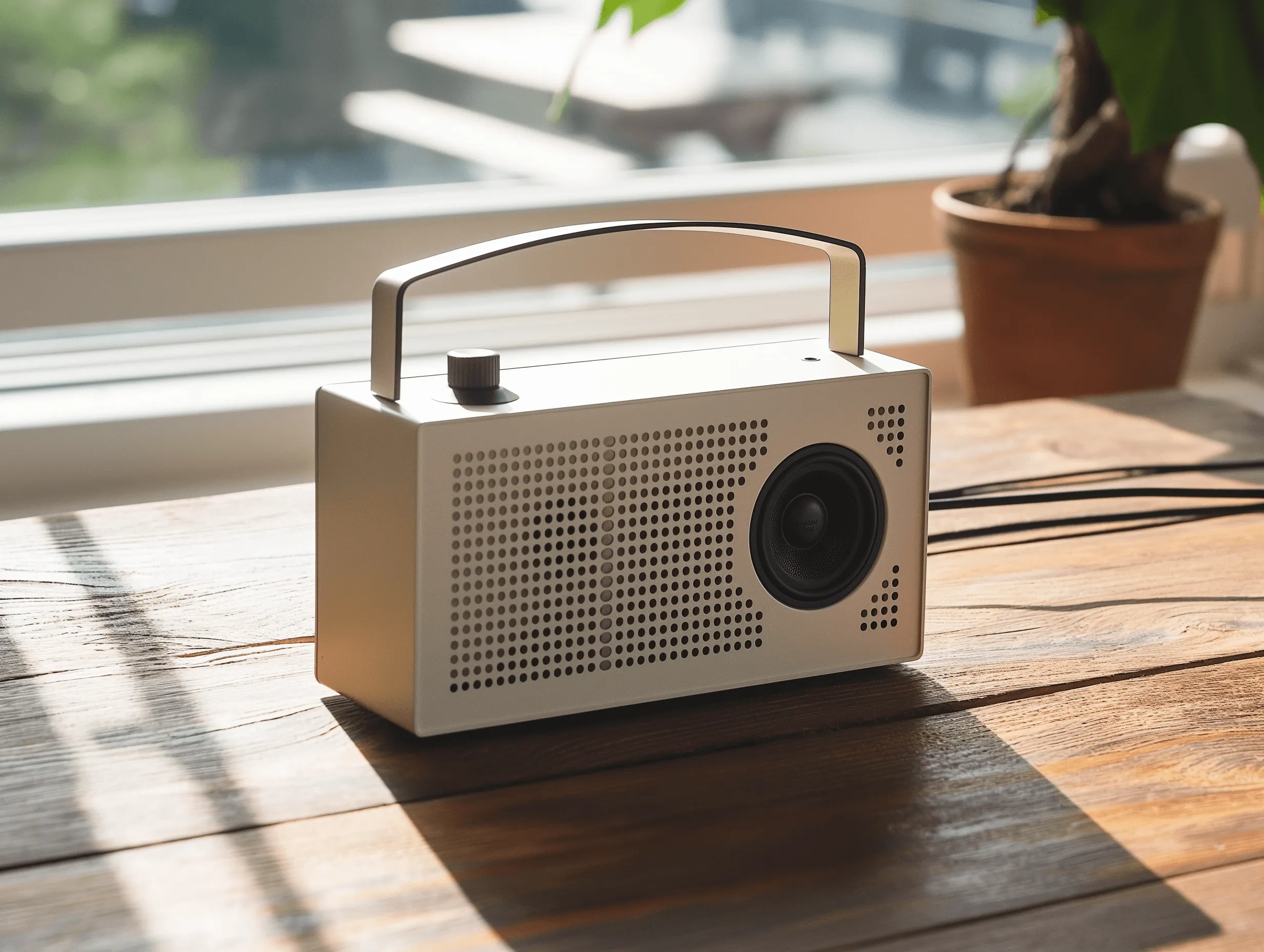
Tech 101: Beginner’s Guide to Choosing Gadgets That Last
Your phone just died after 18 months, your laptop's acting like it's from the stone age, and don't even get me started on that fitness tracker that gave up after three workouts 😤 If you're tired of gadgets that promise the world but barely last through your morning coffee routine, you're not alone.
Here's the thing - choosing tech that actually lasts isn't rocket science, but there are some insider tricks that most people never learn. I used to be that person who'd fall for every shiny new gadget, only to watch it become expensive digital paperweight within months. But after years of trial and error (and way too much money down the drain), I've cracked the code on finding tech that goes the distance.
Why Most Gadgets Die Young (And How to Avoid the Trap)
Let's be real - manufacturers aren't exactly incentivized to make products that last forever. They want you coming back for more, which is why that "revolutionary" device you bought last year is already feeling outdated.
But here's what I've learned: the gadgets that survive and thrive have three key things in common. They're built with quality materials, they get regular software updates, and they're made by companies that actually care about their reputation long-term.
Think about it this way - would you rather buy five cheap phones over ten years, or one solid device that keeps up with your needs? The math is pretty obvious when you break it down like that.
The Foundation: Build Quality That Actually Matters
Okay, so how do you spot quality without becoming a tech expert overnight? It's simpler than you think.
Materials Tell the Story
When you're shopping, pay attention to what the device is actually made of. Plastic might be lighter, but metal and glass construction usually means the manufacturer invested in durability. I'm not saying all plastic is bad - some high-end polymers are incredibly tough - but cheap plastic feels cheap for a reason.
Run your hands over the device. Does it feel solid? Are there any creaky parts or loose buttons? Trust your instincts here. If something feels flimsy in the store, it's not going to magically become more durable at home.
The Water Resistance Reality Check
Here's something most people don't realize - water resistance isn't just about dropping your phone in the toilet (though that happens more than we'd like to admit). It's actually a great indicator of overall build quality.
Devices with proper water resistance have better seals, tighter construction, and more attention to detail. Even if you never plan to take your gadget swimming, that IP67 or IP68 rating tells you the manufacturer cared enough to engineer it properly.
Software Support: The Make-or-Break Factor
This is where things get interesting, and tbh, it's probably the most important factor that people completely ignore.
Your hardware might be bulletproof, but if the software stops getting updates, your device becomes a security risk and compatibility nightmare. I learned this the hard way with an Android tablet that was abandoned by its manufacturer after just one year.
The Update Promise
Before buying anything, research the company's track record with software updates. Apple typically supports their devices for 5-6 years, while Google promises 3-5 years for Pixel devices. Samsung has stepped up their game recently with 4-5 year commitments.
For other brands? Do your homework. Check forums, read reviews from people who've owned the device for a while, and see if the manufacturer has a history of abandoning products.
Custom Software vs. Stock Experience
Here's a pro tip that changed everything for me: devices running closer to stock software tend to get updates faster and last longer. Heavy manufacturer customizations might look cool initially, but they often slow down update rollouts and can cause stability issues down the line.
Performance That Ages Gracefully
Nobody wants a device that feels sluggish after six months, but here's the thing - performance isn't just about having the fastest processor.
The RAM Reality
I used to think 4GB of RAM was plenty for a phone. Boy, was I wrong. Apps keep getting more demanding, and operating systems need more resources over time. What feels snappy today might feel like molasses in two years.
For smartphones, I'd recommend at least 6GB of RAM, preferably 8GB if you want it to feel fast for years. For laptops, 8GB is the absolute minimum, but 16GB is becoming the sweet spot for longevity.
Storage That Makes Sense
Storage is another area where people often cheap out and regret it later. Sure, cloud storage exists, but you don't want to be constantly managing space on your device.
Photos, apps, and cached data add up faster than you think. What seems like plenty of storage today will feel cramped in a year or two. Always buy more storage than you think you need - your future self will thank you.
Battery Life: The Long Game
Battery degradation is just a fact of life, but some devices handle it way better than others.
Lithium-ion batteries typically lose about 20% of their capacity after 2-3 years of normal use. But here's what most people don't know - how you charge and use your device makes a huge difference in how gracefully that battery ages.
Smart Charging Features
Look for devices with intelligent charging features. Many modern phones and laptops can learn your routine and optimize charging accordingly. They might slow down the final charging phase or delay reaching 100% until you actually need the device.
These features might seem like marketing fluff, but they genuinely help preserve battery health over time. I've seen phones that still had 85% battery health after three years of heavy use, just because they had good charging management.
Brand Reputation and Support
This might sound obvious, but the company behind your gadget matters more than most people realize.
I'm not saying you need to stick with the biggest names, but do some research on the company's customer service reputation. When something goes wrong (and eventually, something always does), you want to deal with a company that actually stands behind their products.
Warranty and Repair Options
Speaking of standing behind products - what's the warranty situation? A company that offers a solid warranty is usually confident in their build quality. More importantly, can you actually get the device repaired if needed?
Some manufacturers make their devices nearly impossible to repair, which means a minor issue becomes a reason to buy a whole new device. Look for companies that support right-to-repair initiatives or at least make replacement parts available.
Future-Proofing Your Purchase
Nobody has a crystal ball, but there are ways to make educated guesses about what features will matter in the future.
Connectivity Standards
Make sure your device supports current connectivity standards. For phones, that means 5G support (even if your area doesn't have it yet). For laptops, look for Wi-Fi 6 and USB-C ports. These standards will become more important over time, and you don't want to be stuck with outdated connectivity.
Expandability Options
Can you upgrade the storage or RAM later? Not all devices allow this anymore, but when it's possible, it's a huge advantage for longevity. Being able to add more storage or memory can extend a device's useful life by years.
Red Flags to Avoid
Alright, let's talk about the warning signs that should make you run in the other direction.
If a device is significantly cheaper than similar competitors, there's usually a reason. Maybe it's older hardware, maybe the build quality is questionable, or maybe the company is about to discontinue support.
Also, be wary of brands that seem to release new models every few months. This usually means they're not investing much in long-term support for any single device.
The Spec Sheet Trap
Don't get too caught up in impressive-sounding specifications that don't translate to real-world performance. A device with a slightly slower processor but better optimization will often feel faster and more reliable than something with impressive specs but poor software.
Making the Final Decision
When you're ready to pull the trigger, take a step back and think about how you actually use your devices. The best gadget for you isn't necessarily the one with the most features - it's the one that does what you need reliably for years to come.
Consider your usage patterns. Are you a heavy user who needs maximum performance, or do you just need something reliable for basic tasks? There's no point paying for features you'll never use, but don't skimp on the fundamentals that affect longevity.
Frequently Asked Questions
How long should I expect a quality gadget to last?
For smartphones, 3-4 years is reasonable, with premium devices often lasting 5-6 years. Laptops should easily last 5-7 years with proper care. Tablets fall somewhere in between at 4-6 years, depending on usage.
Is it worth buying extended warranties?
It depends on the device and your usage. For expensive devices you rely on heavily, extended warranties can provide peace of mind. But for cheaper gadgets, the warranty cost might not justify the coverage.
Should I always buy the latest model?
Not necessarily. Sometimes the previous generation offers better value, especially if you don't need the newest features. Just make sure you're not buying something that's about to lose software support.
How important are online reviews?
Very important, but focus on reviews from people who've owned the device for at least 6-12 months. Initial reviews might miss long-term issues like battery degradation or software problems.
What's the biggest mistake people make when buying tech?
Focusing too much on specs and not enough on the overall user experience and long-term support. A device is only as good as its weakest link, and that's often software support or build quality.
Bottom Line
Choosing gadgets that actually last isn't about finding the cheapest option or even the most expensive one. It's about understanding what makes a device durable and finding the sweet spot between features, quality, and price.
Take your time, do your research, and don't be afraid to spend a bit more upfront for something that'll serve you well for years. Your wallet (and your sanity) will thank you when you're not constantly dealing with dying devices and frustrating replacements.
Remember - in the world of tech, the most expensive purchase is often the cheap one you have to replace every year. Invest wisely, and your gadgets will be reliable partners for the long haul ✨
.png)
.jpg)











Comments: